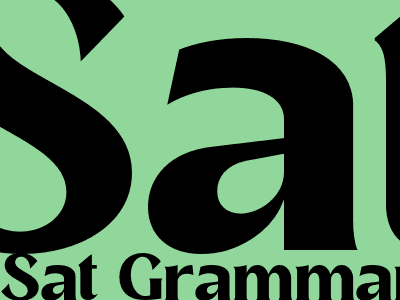SAT Grammar Cheat Sheet
Overview
The SAT is a standardized test used for college admissions in the United States. It is divided into three sections: Reading, Writing and Language, and Math. The Writing and Language section tests your knowledge of grammar, usage, and mechanics. This cheat sheet provides a quick overview of the most important grammar rules you need to know for the SAT.
Subject-Verb Agreement
The subject of a sentence must agree in number with the verb. This means that if the subject is singular, the verb must be singular, and if the subject is plural, the verb must be plural.
For example:
- The boy runs to the store.
- The boys run to the store.
Pronoun Agreement
A pronoun must agree in person, number, and gender with the noun it refers to. This means that if the noun is first person, the pronoun must be first person, and if the noun is plural, the pronoun must be plural. Additionally, if the noun is masculine, the pronoun must be masculine, and if the noun is feminine, the pronoun must be feminine.
For example:
- I went to the store.
- They went to the store.
- He went to the store.
- She went to the store.
Verb Tense
The verb tense must agree with the time frame of the sentence. This means that if the sentence is in the present tense, the verb must be in the present tense, and if the sentence is in the past tense, the verb must be in the past tense.
For example:
- I run to the store every day.
- I ran to the store yesterday.
Modal Verbs
Modal verbs are used to express possibility, necessity, or advice. The most common modal verbs are can, could, may, might, must, should, and will.
For example:
- I can swim.
- I could swim when I was younger.
- I may go to the store later.
- I might go to the store later.
- I must go to the store.
- I should go to the store.
- I will go to the store.
Adjectives and Adverbs
Adjectives are used to describe nouns, and adverbs are used to describe verbs, adjectives, or other adverbs. Adjectives and adverbs must agree in number and gender with the words they modify.
For example:
- The big dog is barking.
- The dog is barking loudly.
Prepositions
Prepositions are used to show the relationship between a noun or pronoun and another word in the sentence. The most common prepositions are in, on, at, to, from, and by.
For example:
- The book is on the table.
- I am going to the store.
- I came from the store.
Conjunctions
Conjunctions are used to connect words, phrases, or clauses. The most common conjunctions are and, but, or, nor, for, and so.
For example:
- I like apples and oranges.
- I like apples, but I don't like oranges.
- I like apples, or I like oranges.
- I don't like apples nor oranges.
- I like apples, for they are delicious.
- I like apples, so I eat them every day.

Komentar